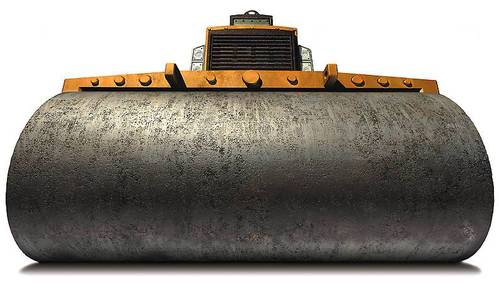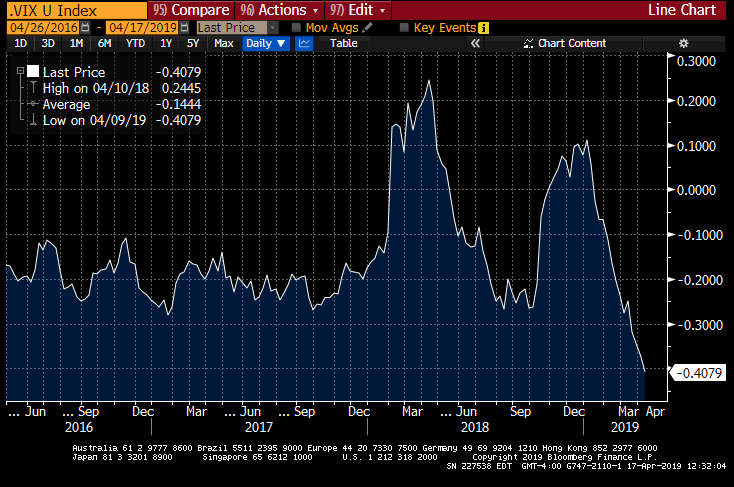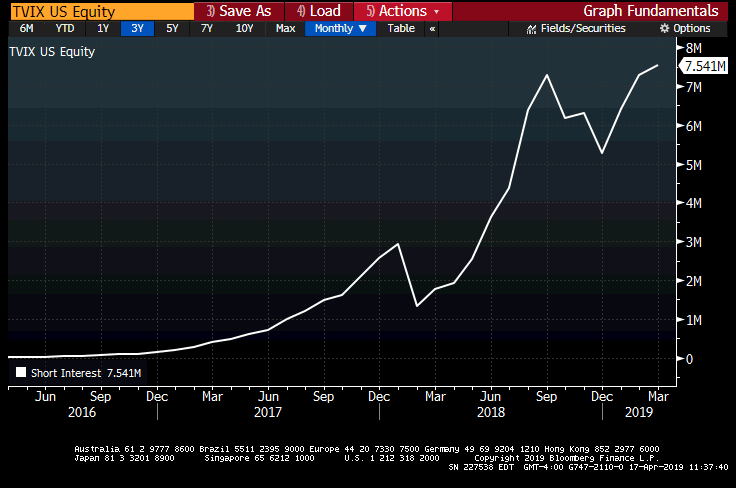There are a number of factors that make the current mania in risk assets unique. Most notable may be the breadth of extreme overvaluation not just within the equity market but across a number of other asset classes. The incredible reach for yield we have seen, driven by the lowest interest rates in 5,000 years, has played out in everything from junk bonds and dividend-paying stocks to real estate and MLPs.
Perhaps the most notable of all the rampant risk taking in the name of generating yield has been the widespread selling of insurance. Here I mean selling credit default swaps, or put options on the S&P 500, or even real insurance. Most popular of all, though, has to be the short volatility trade. As I wrote a couple of years ago, this thing has gotten completely out of hand.
Just over a year ago, we saw the biggest short vol ETF implode in a matter of hours. Many thought this was the death knell for the broader short vol trade but it appears those rumors were greatly exaggerated. These traders are back and trading bigger than ever. The chart below plots the net position of non-commercial traders in VIX futures as a percent of open interest. There current short position makes that seen in early-2018 look minuscule.
We can also look to the volatility ETFs to try to get a picture of where this trade currently stands. Interestingly, since VXX went away at the end of January and was replaced by VXXB Barclays has not released details regarding the short interest in the fund. Still, we can look to TVIX, the second most popular VIX ETF by assets. Here, the message is the same as short interest recently surged to record highs far beyond what was seen prior to the XIV evisceration.
In all, it looks like traders have become extremely complacent in picking up pennies in front of steamroller once again. And rather than just purchase a straight up short vol ETF like XIV they are shorting a 2x vol ETF, enhancing both their leverage and their total risk. What’s more, their extreme positioning may be the only catalyst needed to call the steamroller back to finish the job.



